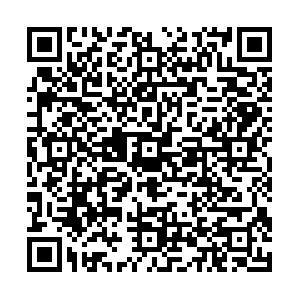Effectiveness of comprehensive cognitive behavioral intervention on juvenile violent behavior
-
摘要:
目的 探讨认知行为综合治疗对青少年暴力行为的干预效果,以期为青少年暴力行为的矫正提供有益借鉴。 方法 使用青少年暴力风险评估量表(VRS-YV)在石家庄廉北中学选取120名有暴力行为或暴力倾向的中学生作为研究对象。使用随机数字表法分为观察组(n=60)和对照组(n=60)。对照组不做任何干预,观察组接受认知行为综合治疗。比较两组学生干预前后的暴力行为、暴力风险、冲动行为、外显攻击行为变化。 结果 观察组学生干预后的人格侮辱、关系攻击、攻击他人、自虐行为、自杀意念、严重暴力维度评分及总暴力评分均较干预前降低(t值分别为6.32,7.88,10.05,7.05,9.27,8.01,P值均 < 0.05),对照组干预前后各维度评分均无明显变化(t值分别为0.35,0.24,1.01,0.78,0.49,0.53,P值均>0.05)。观察组学生干预后的人格侮辱、关系攻击、攻击他人、自虐行为、自杀意念、严重暴力维度评分及总暴力评分均低于对照组(t值分别为9.65,6.95,10.54,9.77,6.54,4.28,16.20,P值均 < 0.05)。观察组干预后的VRS-YV评分较干预前明显降低,干预后VRS-YV评分≥27分者占比比干预前更低(χ2=80.00,P < 0.05)。组间比较显示,观察组干预后VRS-YV评分≥27分者占比低于对照组(χ2=59.61,P < 0.05)。 结论 对有暴力行为倾向的青少年实施认知行为综合治疗,能够有效提升其共情能力,降低暴力风险水平。 Abstract:Objective To explore the effectiveness of cognitive behavioral therapy on adolescent violent behaviors. Methods A total of 120 middle school students with violence or violence tendency were selected from Lianbei Middle School in Shijiazhuang and divided into intervention and control group(n=60). The intervention group received comprehensive cognitive behavioral intervention while the control group did not. The changes of violence, violent risk, impulsive behavior and explicit aggressive behavior before and after intervention were compared between the two groups. Results The scores of personality insult, relational aggression, self-abuse, suicide ideation, severe violence dimension and total violence in the intervention group decreased significantly compared to before intervention(t=6.32, 7.88, 10.05, 7.05, 9.27, 8.01, P < 0.05). No similar changes were observed in the control group(t=0.35, 0.24, 1.01, 0.78, 0.49, 0.53, P>0.05). The scores of personality insult, relational aggression, self-abuse, suicide ideation, severe violence and total violence in the intervention group were significantly lower than those in the control group(P < 0.05). In the intervention group, the VRS-YV score after intervention was significantly lower than that before intervention, and the proportion of individuals with VRS-YV score≥27 after intervention decreased significantly compared to before intervention (P < 0.05) and the control group(P < 0.05). Conclusion The comprehensive cognitive behavior intervention shows effectiveness in improving the empathy ability and reduce the level of violent risk. -
Key words:
- Cognition /
- Behavior /
- Violence /
- Intervention studies /
- Health promotion /
- Adolescent
-
表 1 两组学生干预前后MSSBVS评分比较(x±s)
Table 1. Comparison of MSSBVS scores between the two groups before and after intervention(x±s)
干预前后 组别 人数 统计值 心理暴力 躯体暴力 总暴力 人格侮辱 关系攻击 性骚扰 权力侵犯 攻击他人 自虐行为 自杀意念 严重暴力 干预前 观察组 60 86.72±2.23 71.62±4.55 24.85±3.04 42.36±5.71 46.92±3.87 42.56±2.66 14.96±2.33 3.82±0.96 92.65±2.41 对照组 60 86.80±1.47 72.06±3.78 25.60±4.91 41.96±6.29 45.77±4.25 41.05±2.74 15.71±1.95 3.70±0.66 91.82±3.01 t值 -0.19 -0.58 -1.01 0.36 1.55 1.06 -0.65 0.77 1.12 P值 0.85 0.57 0.32 0.72 0.12 0.22 0.32 0.55 0.14 干预后 观察组 60 82.33±2.74* 60.62±5.05* 23.02±2.75 43.02±6.05 35.05±4.75* 35.21±3.02* 11.36±3.19* 1.66±0.54* 83.02±3.95* 对照组 60 85.77±3.06 71.62±6.33 24.08±3.65 42.14±5.05 44.65±3.21 42.10±3.35 14.89±2.33 3.62±0.70 91.05±2.14 t值 -9.65 -6.95 0.54 0.24 -10.54 -9.77 -6.54 -4.28 -16.20 P值 < 0.01 < 0.01 0.14 0.19 < 0.01 < 0.01 < 0.01 < 0.01 < 0.01 注:与本组干预前比较,*P < 0.05。 -
[1] 高见, 王鹏翀, 李占江. 认知行为治疗的生物学机制[J]. 心理科学进展, 2019, 27(3): 146-156.GAO J, WANG P C, LI Z J. The biological mechanism of cognitive behavioral therapy[J]. Adv Psychol Sci, 2019, 27(3): 146-156. [2] 袁兆康, 文小桐. 中国青少年健康危险行为研究设计与流行现状[J]. 中国学校卫生, 2019, 40(4): 638-640. doi: 10.16835/j.cnki.1000-9817.2019.04.046YUAN Z K, WEN X T. The research design and prevalence status of adolescent health risk behaviors in China[J]. Chin J Sch Health, 2019, 40(4): 638-640. doi: 10.16835/j.cnki.1000-9817.2019.04.046 [3] STOLTZ S, LONDEN M V, DEKOVIC M, et al. Effectiveness of an individual school-based intervention for children with aggressive behaviour: a randomized controlled trial[J]. Behav Cogn Psychother, 2013, 41(5): 525-548. doi: 10.1017/S1352465812000525 [4] 常进锋. 时空社会学: 青少年犯罪成因的新视角[J]. 中国青年政治学院学报, 2020, 39(1): 134-140.CHANG J F. Sociology of time and space: a new perspective on the causes of juvenile delinquency[J]. J Chin Youth Coll Polit Sci, 2020, 39(1): 134-140. [5] 肖玉琴, 张卓, 赵辉, 等. 青少年暴力风险评估量表在未成年暴力犯的信效度检验[J]. 中国健康心理学杂志, 2017, 25(11): 1715-1720.XIAO Y Q, ZHANG Z, ZHAO H, et al. The validity and reliability of the violence risk scale-youth version in juvenile offenders of China[J]. Chin J Health Psychol, 2017, 25(11): 1715-1720. [6] 刘丹福, 张璐, 宗焱. 暴力型罪犯元认知特征研究: 以四川为例[J]. 法制与社会, 2018, 27(16): 224-225.LIU D F, ZHANG L, ZONG Y. Metacognitive characteristics of violent criminals: a case study of Sichuan Province[J]. Legal System Soc, 2018, 27(16): 224-225. [7] 郑春玲, 刘丽, 张海燕, 等. 中学生暴力行为量表的编制[J]. 中国心理卫生杂志, 2013, 27(4): 285-291. doi: 10.3969/j.issn.1000-6729.2013.04.011ZHENG C L, LIU L, ZHANG H Y, et al. Development of the middle school students violent behavior scale[J]. Chin Ment Health J, 2013, 27(4): 285-291. doi: 10.3969/j.issn.1000-6729.2013.04.011 [8] 刘小宁, 肖永成, 曲灵心, 等. 中学生校园暴力中施暴行为及影响因素分析[J]. 中国公共卫生, 2018, 34(8): 1129-1133.LIU X N, XIAO Y C, QU L X, et al. Prevalence and impact factors of school violent perpetrator behaviors among middle school students[J]. Chin J Public Health, 2018, 34(8): 1129-1133. [9] 刘邦惠. 违法犯罪青少年心理矫治探析[J]. 预防青少年犯罪研究, 2018, 37(1): 18-31. doi: 10.3969/j.issn.2095-3356.2018.01.002LIU B H. Psychological correction of juvenile delinquents[J]. Juven Delinq Prev Res, 2018, 37(1): 18-31. doi: 10.3969/j.issn.2095-3356.2018.01.002 [10] 肖玉琴, 赵辉, 文凤, 等. 认知行为团体矫正对未成年犯暴力风险水平的影响[J]. 中国临床心理学杂志, 2019, 27(1): 201-205.XIAO Y Q, ZHAO H, WEN F, et al. Effects of cognitive behavior therapy group intervention on violence risk level of juvenile offenders[J]. Chin J Clin Psychol, 2019, 27(1): 201-205. [11] 侯璐璐, 江琦, 王焕贞, 等. 特质愤怒对攻击行为的影响: 基于综合认知模型的视角[J]. 心理学报, 2017, 49(12): 1548-1558.HOU L L, JIANG Q, WANG H Z, et al. The relationship between trait anger and aggressive behavior: based on the perspective of the integrative cognitive model[J]. Acta Psychol Sinica, 2017, 49(12): 1548-1558. [12] PILECKI B, MCKAY D. The theory-practice gap in cognitive-behavior therapy[J]. Behav Ther, 2013, 44(4): 541-547. doi: 10.1016/j.beth.2013.03.004 [13] FOSSATI A, BARRATT E S, ACQUZRINI E, et al. Psychometric properties of an adolescent version of the Barratt Impulsiveness Scale-11 for a sample of Italian high school students[J]. Percept Mot Skills, 2002, 95(2): 621-635. doi: 10.2466/pms.2002.95.2.621 [14] 黄先娥. 认知行为疗法对武汉市某社区精神分裂症患者社会功能及暴力行为的影响[J]. 医学与社会, 2016, 29(7): 84-86.HUANG X E. Effect of CBT on social function and violent behavior of schizophrenia patients in a community in Wuhan[J]. Med Soc, 2016, 29(7): 84-86. [15] 陈珊, 冉宇鹤, 彭萱. 认知行为治疗降低社区矫正对象再犯率有效性的质性系统评价[J]. 宜宾学院学报, 2019, 19(7): 60-68. doi: 10.3969/j.issn.1671-5365.2019.07.008CHEN S, RAN Y H, PENG X. Evaluation of cognitive-behavioural therapy programmes in reducing criminal recidivism rate of community correction objects: a systemic review[J]. J Yibin Univ, 2019, 19(7): 60-68. doi: 10.3969/j.issn.1671-5365.2019.07.008 [16] 张岩, 曹江, 徐伟杰, 等. 团体认知行为干预对儿童青少年情绪障碍的效果观察[J]. 中华行为医学与脑科学杂志, 2018, 27(5): 450-454. doi: 10.3760/cma.j.issn.1674-6554.2018.05.014ZHANG Y, CAO J, XU W J, et al. Effect of group cognitive-behavior therapy intervention on dysthymic disorders in children and adolescents[J]. Chin J Behav Med Brain Sci, 2018, 27(5): 450-454. doi: 10.3760/cma.j.issn.1674-6554.2018.05.014 -

 点击查看大图
点击查看大图
表(1)
计量
- 文章访问数: 742
- HTML全文浏览量: 309
- PDF下载量: 56
- 被引次数: 0





 下载:
下载: